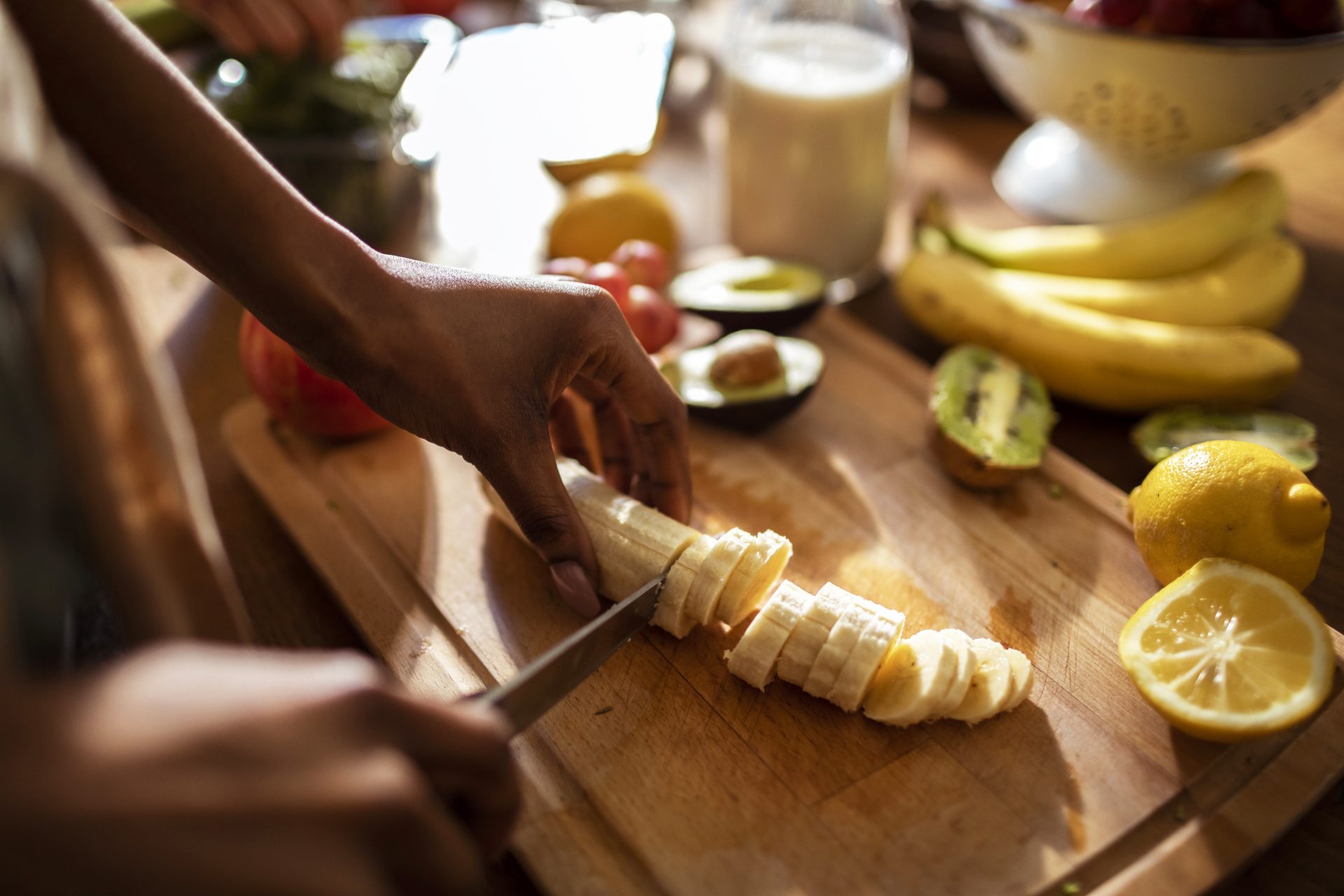“How I’m navigating eating more during RED-S recovery”
If you’re experiencing symptoms of RED-S (relative energy deficiency in sport), increasing your calories and decreasing your training is key to recovery. Ally Sinyard writes about how she is navigating the complicated world of “eat more, exercise less”.
It sounds counter-intuitive, doesn’t it? “Eat more, exercise less.” But that’s exactly what the dietician ordered.
I’m currently on a mission to get my period back after six or seven years of not even a spot. It’s gone AWOL due to RED-S (relative energy deficiency in sport), a syndrome that is getting more and more attention in the world of fitness and women’s health. It basically means I have low energy availability, due to many years of not eating enough to fuel my training.
As a result of this energy deficiency, my clever body has gone into energy saving mode, something which reproduction is not considered a necessary part of. My hypothalamic-pituitary-axis has been suppressed, leading to what’s commonly referred to as functional hypothalamic amenorrhea (FHA).
You may also like
Period problems: “I haven’t had a period in 6 years – here’s how it affects my health and fitness”
GPs and gynaecologists have only offered me the pill or coil as a solution to my missing periods, which I believe is partly due to a lack of general awareness about RED-S. So I took myself off to a specialist clinic who have finally put me on the right road to recovery.
Getting your period back from RED-S isn’t rocket science. Unless you have another underlying issue that has caused your periods to stop – which is why it’s so important to get yourself checked out either way – your recipe for success is eating more calories to reassure your body that it’s safe to fire up the hormones again. A lot more calories…
“Most women with a normal cycle need a minimum of 1400-1500kcal just to fuel physiological processes and cope with the daily stressors of life,” says Holly Dunn, clinical nutritionist and hypothalamic amenorrhea specialist. “This is before any movement or significant non-exercise-induced activity thermogenesis.
“For HA recovery, we cite 2000kcal as a minimum starting point, with most women aiming for ~2500kcal. However, note that many women may need in excess of this. ‘Overshooting’, ie taking in more calories than you might assume you need at this time, can be a faster route to recovery.”

“Consider that the body has a lot of repair work to do,” says Dunn. “All that extra food/energy is needed to recover everything from proper digestive function, thermoregulation, growth of hair and nails, to reproductive function. It takes a lot of energy just to subsist as a human – let alone a healthy, fertile, vibrant and fully-functioning woman in today’s modern world!”
At the same time, I’ve been instructed to decrease my training load and minimise stress in every way I can. In fact, some people I’ve spoken to with a history of RED-S and HA stopped exercising altogether, and got their period back within three months.
Fortunately, because I’ve already put some weight on (I suppose lockdown wasn’t all bad), I can still do a session or two of running or HIIT a week, but the rest is rest and gentle yoga.
Hearing the scientific and anecdotal evidence has been necessary for me to get into the right headspace to do this. I’ve been a dedicated runner for years and, at one time, a kickboxing champion, with a long history of body image issues and disordered eating.
You may also like
Period problems: “How I got my periods back after two years by reducing chronic stress”
Like most folks roughly my age, I grew up around a culture of fatphobia and body-shaming that led me to believe that my size and shape dictated my value and how others treated me; that strict dieting and discipline in the gym was a virtue; that if I could have Kate Moss’s legs in a pair of denim shorts, I’d be happier.
I’ve spent some time in recovery unpacking these limiting beliefs, and I can finally see them for what they are: restrictive, unhelpful, unhealthy, and, not to mention, not even the least bit true. We might still have a way to go in terms of body acceptance in our society but, my god, we’ve come a long way from “nothing tastes as good as being thin.” Stuff your shorts, Moss. Nothing tasted good when I was thin.
It’s been fascinating unpacking and undoing everything I thought I knew about eating. After years of training myself to only eat when I’m hungry, my metabolism has been shot to pieces and my hunger cues are suppressed. In recovery, I’m eating mechanically, most often when I just don’t feel hungry. I’ve gone from trying to create the biggest plates with the fewest calories to clueing myself up on calorie-dense foods.
How to eat more and regain your period
Increasing your calories can be daunting for many, almost physically impossible for others. A big plate of veggies is no longer where it’s at, but looking for foods that give you the most caloric bang for your buck.
“It may be easier to start with small steps like adding more fats to meals,” suggests Dunn. “Cook with olive oil, butter and coconut oil, or use full fat coconut milk in curries and sauces. Add a generous drizzle of olive oil to vegetables and soups, choose nut butters in preference to whole nuts and use a whole avocado, instead of half.”

Getting enough carbohydrates and protein is also really important, so look at eating starch-rich carbs like rice, pasta and wholegrain breads and make sure you get protein into every meal. I’m a vegetarian who occasionally eats fish, so I’m eating eggs, tofu, veggie sausages, beans, quorn mince and lentils. For an afternoon snack, I top up my protein and calories with a calcium-rich Huel shake.
Smoothies are also a great idea, particularly for getting the extra calcium in to support your bone health. I love having one with full fat milk, peanut butter, protein powder, a handful of oats and a banana after a little workout. And as for dessert, you’d better believe I’m having ice cream after every dinner!
As a final important note: it’s not just what I eat that’s important, but when I eat too. I eat every two to three hours, so there’s always fuel in the tank, and have waved goodbye to going for a morning run before breakfast. Yep, fasted training is out.
“Assessing meal timing and frequency, especially in relation to any exercise, is critical,” Dunn tells me. “This is because it is possible for the body to sit in a state of low energy availability at particular times of the day.”
When you think about it, running first thing in the morning, when you’ve already been fasting for eight hours, is pretty stressful on the body. Now, I have a carb-rich snack about 30 minutes before, and make sure I eat something with carbs and protein within half an hour of finishing my work-out.
You may also like
Why calcium is one of the key nutrients you need if you’re exercising with amenorrhea
Thanks to getting clued up on nutrition, eating more hasn’t necessarily felt like eating bigger amounts. And so far, so good. Addressing my limiting beliefs and relationship with food has made it easier to accept the weight gain – as has getting rid of my scales, limiting body checking, buying clothes a size up and putting my tight jeans at the back of the wardrobe.
It won’t be like this forever. I’ll be considered fully recovered when I’ve had nine periods in a 12 month cycle. So while this state of recovery might only be temporary, my motivation comes from knowing I’m finding a healthier relationship with food, training and my body, and finding better health, for life.
For more first-person stories, workout tips and nutritious recipes, visit the Strong Women Training Club.
Images: Getty, Instagram/Greer McNally
Source: Read Full Article
